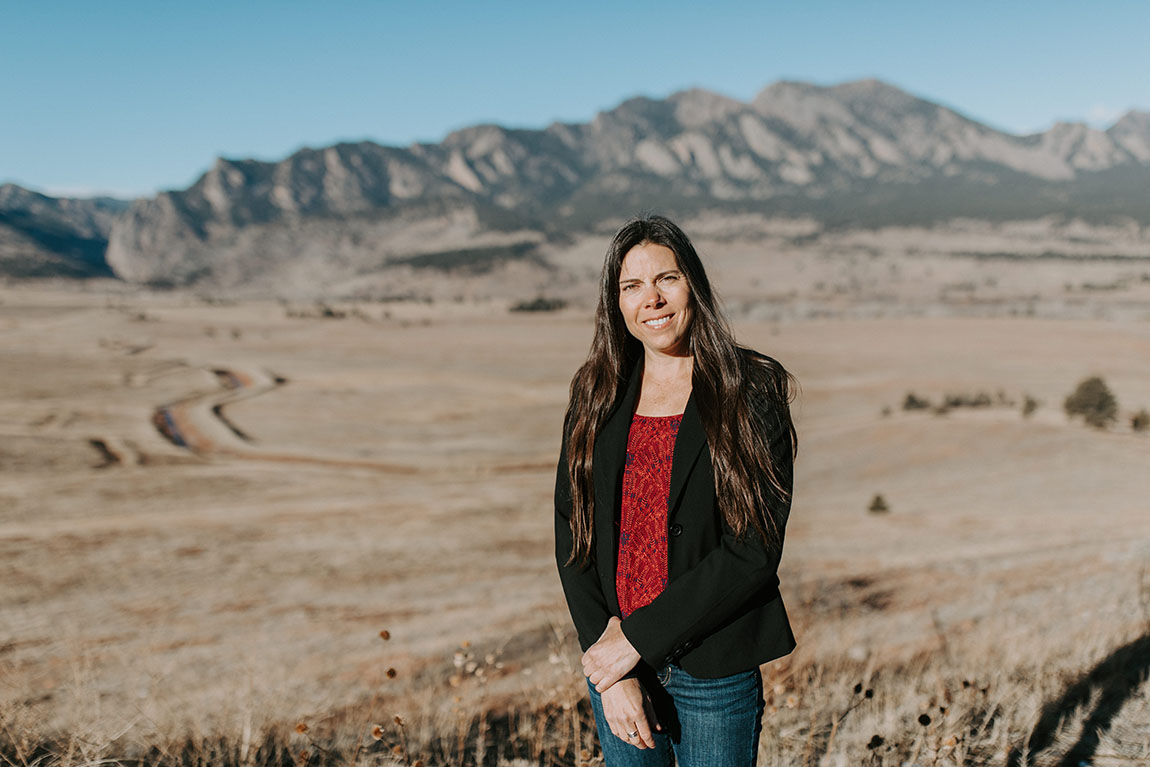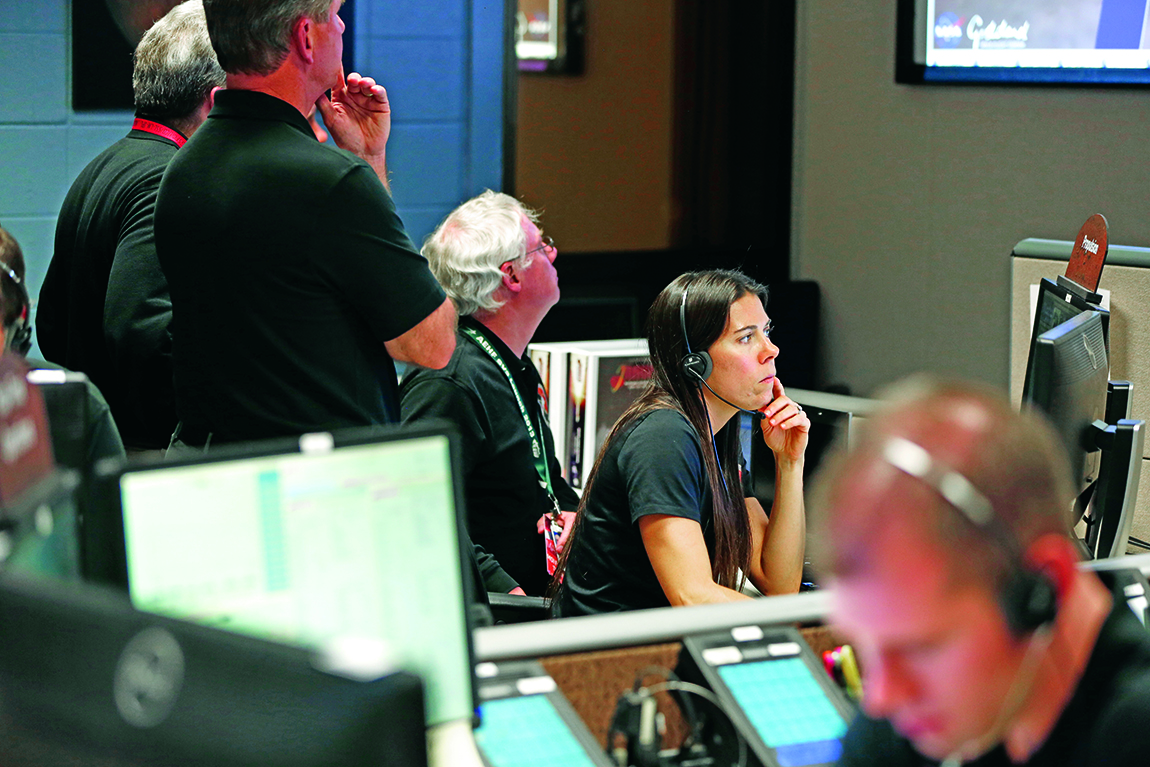Out of This World
Pamela Campbell ’01, a mechanical engineer at Lockheed Martin, works in the propulsion group on some spacecraft bound for Earth orbit and some for deep space exploration.By: Mike Falk Monday, March 8, 2021 10:51 AM
 Pamela Campbell ’01. Photo by Catherine Larsen
Pamela Campbell ’01. Photo by Catherine LarsenWhen Pamela Campbell ’01 was about 10 years old, she read in an issue of her dad’s Discover magazine that the United States would start sending people to Mars in 2010. Quickly doing the math, she figured that at that stage of her life, she would be the perfect candidate to be on the first manned mission.
Discover’s prediction proved to be wrong, so Campbell is doing the next best thing: Instead of sending herself to Mars, she’s sending her work to Mars—and beyond.
Campbell is a mechanical engineer at Lockheed Martin Space in Littleton, Colorado, where she works in the propulsion group doing analysis and operations for a variety of missions. She contributes on both the NASA side (spacecraft that are currently in or bound for deep space) and the military side (spacecraft mostly in geosynchronous Earth orbit that provide communication and observation functions for the U.S. Space Force).
At any given time, Campbell is involved in 10 to 15 missions. Among those currently on her plate are Mars Odyssey (in orbit since 2001), MAVEN (Mars Atmosphere and Volatile EvolutioN, launched in 2013), Juno (orbiting Jupiter since 2016), OSIRIS-REx (asteroid study and sample-return mission, launched in 2016) and Lucy (asteroid study scheduled for launch in late 2021).

Campbell in Lockheed Martin’s Mission Support Area, awaiting confirmation that MAVEN had successfully fired its thrusters to go into orbit around Mars
“The propulsion system is the part of the vehicle that generates thrust to move about in space,” she says. “My particular role allows me to be involved with the entire life cycle of the spacecraft, from analysis early on in the development to ensure the system is sized correctly to achieve the goals of the mission, through launch and mission operations, when we are sending commands and monitoring performance and telemetry for any signs of problems.”
It takes about three or four years from the time NASA commits to a mission to the spacecraft’s launch. During that time, Campbell and her propulsion group work closely with other systems groups, chiefly GNC (guidance, navigation and control), which will use the propulsion system to guide the spacecraft, and thermal, which ensures that the liquids in the propulsion system won’t freeze or overheat once in space.
“Our role is typically from launch until we get into orbit,” Campbell says. “The launch vehicle can only get the spacecraft so far, generally, and then the craft has to do the rest to get itself into its appropriate orbit. We’re in contact 24/7 for the two-week period or so while we’re getting the spacecraft to orbit.”
Launches usually take place at Kennedy Space Center in Florida, with Campbell back at the mission control center in Colorado. One of her career highlights was the first time she got to say “propulsion is go!” on a launch.
Once the spacecraft is in orbit, Campbell monitors the performance and makes necessary adjustments, which isn’t as simple as using a joystick in a video game. Depending on the distance, orbit mechanics and configuration of the planets, it can take up to an hour for the commands to reach the craft and Campbell to see the effect.
Campbell, who has always been fascinated with flying and space (she got her pilot’s license while she was a Muhlenberg student), launched her career in a non-traditional way. She came to Muhlenberg intending to be premed and wound up with a major in mathematics and a minor in chemistry. One day during her junior year, she says, “I just woke up and decided that I was going to be an aerospace engineer. And here we are.”
It wasn’t that easy. Campbell earned her master’s in aerospace engineering at the University of Virginia, but because Campbell didn’t take part in Muhlenberg’s engineering partnership program with Columbia University, she had some catching up to do. She audited some undergraduate classes while doing graduate work, finishing in an intense two-and-a-half years.
Part of her graduate work was as a research assistant at the NASA Langley Research Center in conjunction with Ball Aerospace, a spacecraft manufacturer based in Colorado. After completing her master’s, Campbell took a job with Ball, but she was laid off in a downsizing just a few months later. She landed at Lockheed Martin in December 2005, and she’s been there ever since.
Had she known where she would end up, might she have chosen a college that offered an engineering major? “I’m glad that I didn’t,” she says. “It was a really great experience. I chose Muhlenberg for the premed but also for the soccer. I really loved soccer at the time and was thrilled that they gave me the opportunity to play for them. And I wouldn’t change that.” Not for the galaxy.
